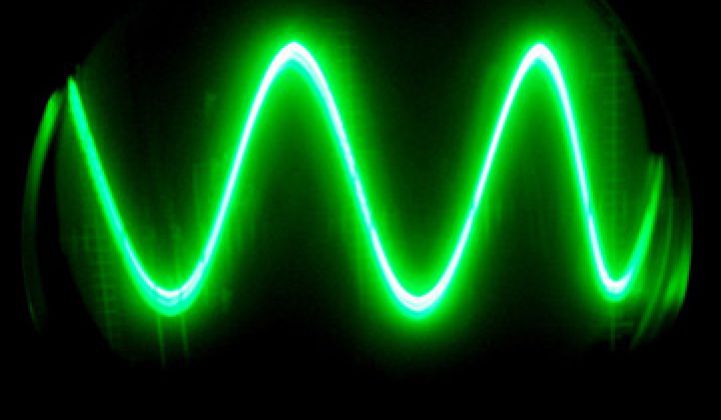If you're in the solar industry, more than 20,000 of your closest friends will be assembling in Dallas, Texas next week to learn, to reveal their wares, and to celebrate solar technology at Solar Power International.
If there are themes that will emerge next week, they will certainly include:
- The increased momentum towards consolidation
- Competing in an energy market where subsidies might soon fade
- The struggles for vendors dealing with declining prices...
- As well as the joy for consumers and installers facing the prospect of declining prices
- The entrance of players like Total, Chevon, Samsung, SK Innovation and other titans of industry
- The emergence of thin-film vendors that are not First Solar
- The increased importance and competition in balance-of-system and panel-level electronics.
It's that last point that we'll cover here.
As with all distributed electronics schemes, these technology solutions seek to maximize energy harvest, minimize power attenuation from shading and panel or thermal mismatch, and improve on the reliability and efficiency of central solar inverters, the long-dominant technology.
Expect announcements and new faces in the crowd of panel-level electronics players. This is the year that panel optimizers started reaching into the commercial and megawatt-scale markets, that microinverters started being integrated into panels themselves, and that a certain leading microinverter firm reached the one-million-units-shipped milestone.
New entrant Azuray Technologies announced its separate DC-DC power optimizer and solar module performance monitor. Panels with shade isues can use the optimizer, panels without shade issues can incorporate only the monitoring unit. It's a nuanced twist on the product that could make for a more cost-effective solution.
ArrayPower will be unveiling its "sequenced inverter" and directing it at commercial-scale applications using crystalline silicon modules. The firm's technology is a unique twist on optimizing the power in a solar string. ArrayPower's direct current to pulse amplitude modulated (“PAM”) current converter system consists of distributed power modulators tied into an array controller. The pulse amplitude modulation (PAM) technology "senses the grid and synchs its pulse output" to the amplitude of the 50 Hz or 60 Hz grid waveform. Each unit's waveform is slightly shifted in time. When combined, those rough waveforms yield a grid-quality signal. It's been called an "inverterless solar solution" by folks close to the firm, and it doesn't fit neatly into the panel-level electronics categories we've explored at Greentech Media.
SolarBridge of Austin, Texas is expected to make an announcement about its partners in the new solar product sector of ACMs (AC modules). Rather than forming a separate microinverter unit, SolarBridge is intent on a seamless integration with the module to form the ACM. We are interested in hearing just who their partners are.
SMA, by far the world's largest manufacturer of central inverters, is finally unveiling its microinverter at SPI.
And we'll hear about the progress made by Enphase, (although they are in their pre-IPO quiet period), Enecsys, Direct Grid, SolarEdge, Tigo, eIQ, etc.
All of these firms are entering a market where there is price pressure on every element of the solar lifecycle, from module to installation to electronics. Residential solar inverters have a cost of about $0.45 per watt, utility inverters are in the range of $0.26 and there is pressure to drive those costs down while maintaining performance and reliability. The DOE's Steve Chu wants to see inverters at $0.10 per watt.
These firms must distinguish themselves amidst bloody competition where price is becoming the primary differentiation.



